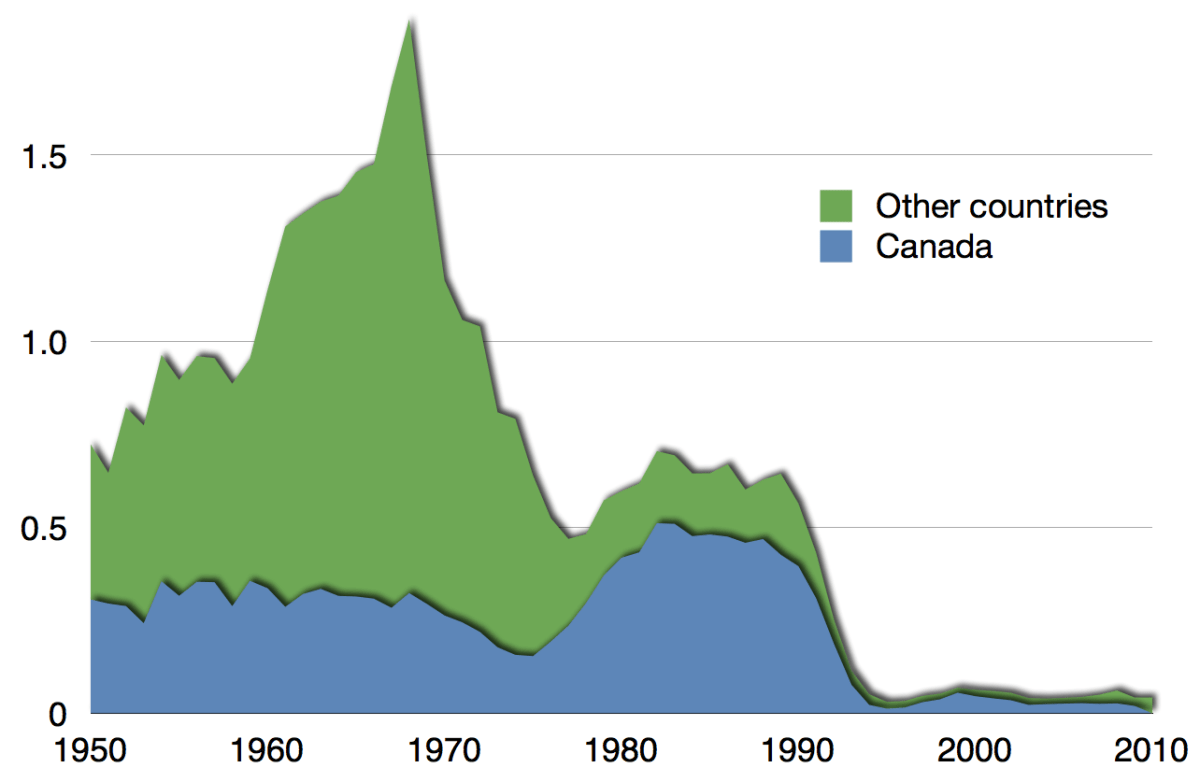(Picture: Total capture of North Atlantic cod, from 1950 to 2000, in thousands of tonnes. Graphic by Epipelagic — Own work, CC BY-SA 3.0, https://commons.wikimedia.org/w/index.php?curid=19281989)
For over 500 years, fishermen from Canada, but also from Europe (Spain, Portugal, France, Germany) had been fishing the abundant banks of North Atlantic cod around Newfoundland in Canada. Pierre Loti, in his novel “an Iceland fisherman” published in 1886, describes the “myriads upon myriads of fish, all alike, gliding slowly in the same direction”, which could be seen immediately below the surface of the sea, “plainly distinguished through the transparency”, and illustrates the fantastic plenty of these cod banks, where fishermen just needed to drop their lines, see the cod biting the hooks, haul the lines, take the cod off the hooks, and throw the lines over and over again. A fisherman’s dream, explaining why boats travelled from Europe, thousands of kilometres across the Ocean, to participate in this bounty.
Continue reading “Collapse of cod fishing around Newfoundland (Canada): a metaphor for our unsustainable and over-confident societies?”

